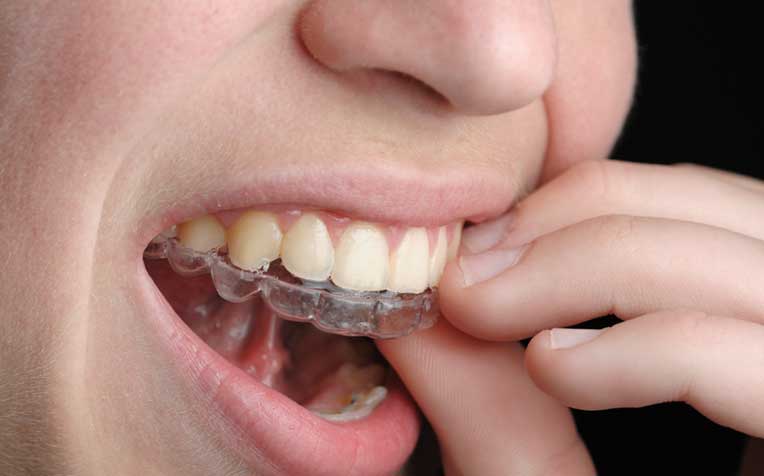
Opt for removable and invisible braces if you don't want the look of wire braces.
Many adults believe they are too old for braces or are afraid of the discomfort and embarrassment of wearing braces at their age. But with advances in orthodontic treatments, wearing braces is no longer aesthetically unattractive or uncomfortable, as it used to be. So why resign yourself to a life with crowded or misaligned teeth?
"More adults are now seeking orthodontic treatment for problems that weren't treated when they were young. Although it may take longer to straighten the teeth because teeth movement slows as we age, the outcomes can be just as good," said Cl A/Prof Chew Ming Tak, Senior Consultant and Director, Department of Orthodontics, National Dental Centre Singapore (NDCS), a member of theSingHealth group.
Why braces?
It is also easier for dentists to perform restorative procedures such as crowns and bridges on aligned teeth.
As facial muscles lose their tightness with age, the upper lip tends to droop downwards. Braces may help to push the teeth forward, making the face look more taut.
"Compared with teenagers, adults do tend to be more motivated to keep close to the dental professional's advice when having braces. They often experience fewer problems during the course of treatment. Their good compliance also helps the orthodontist to attain the objectives of treatment in the shortest possible time," Dr Chew added.
Choosing the right type of braces
Adults and working professionals looking for braces that will not dampen their smile or appearance have plenty of choices today.
Besides traditional fixed metal braces, you can opt for fixed ceramic braces, invisible lingual braces (fixed), or invisible and removable braces (Invisalign).
How do these braces compare with one another?
Traditional metal braces
Traditional metal braces are brackets made of stainless metal that are fixed or "glued" to the teeth's external surface. An archwire runs through the brackets and is held in place by elastic bands. The braces exert pressure on the teeth and gradually, shift the teeth into new positions.
- Pros: Metal braces are the cheapest; they are the most durable and most effective in treating badly misaligned teeth.
- Cons: Metal braces are clearly visible on the teeth. You may feel self-conscious when you smile. The metal wires and braces may trap food particles and hurt your gums during the initial adjustment phase.
Ceramic braces
Ceramic braces are tooth-coloured braces affixed to the teeth's outer surface. They're usually recommended for the upper front teeth.
- Pros: Ceramic braces are more natural-looking.
- Cons: Ceramic braces cost more and can chip or break. They are harder to remove, stain easily, and take longer to straighten your teeth than traditional metal braces.
Lingual braces
Lingual braces work like metal braces except that they are custom-fitted to the back surfaces of teeth instead of the front so no one knows you are wearing braces!
- Pros: Invisible.
- Cons: Lingual braces may affect your speech and graze your tongue. They trap food particles easily and are harder to clean. Excellent oral hygiene is needed. Lingual braces cost more than traditional metal braces.
Invisalign
Of all the braces, Invisalign is the most aesthetically pleasing. It straightens your teeth with invisible aligners which can be removed when eating or brushing.
- Pros: Aesthetically pleasing and comfortable, and easiest to clean.
- Cons: Invisalign costs more than traditional metal or ceramic braces; it is not suitable for severely crowded or misaligned teeth.
Ref. T12
Contributed by

















 Get it on Google Play
Get it on Google Play